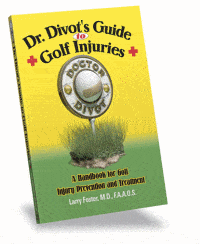Osteoporosis is an important health issue facing all older golfers—particularly females. As a bone doctor, I want you to be aware of this silent but potentially devastating disease.
Osteoporosis occurs when the mineral (calcium) content of bone decreases over time, leading to weakened bones that are more susceptible to fracture. Females—especially women of Caucasian and Asian descent—are particularly prone to develop osteoporosis. But males are not immune, and everyone needs to be aware of the risks and prevention strategies of osteoporosis.
Hip fractures are the most devastating consequence of osteoporosis. There are more than 300,000 osteoporosis-related hip fractures in the United States each year, two-thirds of which occur in women. Fractures of the spine, known as compression fractures, are also quite common. There have been reports of golfers who have sustained compression fractures of the spine while playing golf.
I tell my patients to think of their bones as a calcium “bank account”. We make “deposits” to the bank when we eat calcium-rich foods, and our bodies “withdraw” from the bank to sustain important bodily functions every day. Up until age thirty-five or so, the amount of calcium in the bank account increases. It’s as if we deposit ten dollars a day into our account while our body withdraws eight dollars. As we age (and particularly after women reach menopause) the tide turns and the daily withdrawals from the calcium bank slightly exceed the deposits. With time, the amount of calcium in the bone can fall to the point that the bones weaken and fracture from stresses, such as a golf swing, that would otherwise be tolerated by normal bone.
Unfortunately, there are no warning signs of osteoporosis. The disease is silent and painless until a fracture has occurred, and by then the proverbial horse is out of the barn.
As with most diseases, awareness and prevention of osteoporosis is the smartest strategy. We get tested and treated for high blood pressure to ward off catastrophic heart attacks and strokes. Similarly, golfers at risk (especially females) should be tested for osteoporosis to avoid painful and debilitating fractures later in life. As an orthopedic surgeon, I can promise you that a hip or spine fracture would keep the golfer from enjoying golf for a very long time—possibly forever.
Ask your family doctor, orthopedist, or gynecologist if you should be tested for osteoporosis with a painless and simple bone density scan. If the scan reveals that you are “overdrawn” from your calcium bank account, there are numerous medications available to slow, and even reverse, the loss of calcium. Sometimes, a patients’ bone calcium level with be found to be below normal, but not at the critical level where fractures are imminent (a condition called osteopenia). Patients with osteopenia need to be monitored closely (perhaps with yearly bone density scans) to make sure they do not become osteoporotic.
Maintaining adequate dietary intake of calcium and vitamin D, performing regular weight-bearing exercise, such as golf, and avoiding smoking and excessive use of alcohol is a basic strategy that all golfers should adopt to ward off osteoporosis. Younger golfers—even those in their twenties and thirties—would be wise to plan ahead and be sure their calcium bank account are as full as they can be. Again, generous consumption of calcium-rich foods and regular weight-bearing exercise will pay off handsomely down the road. Just as with a real bank account, every deposit into your calcium bank account will be there for you in the future when you need it.
Now—go have a glass of milk and hit the links!
By Larry Foster, M.D., F.A.A.O.S. (Dr. Divot)
 Larry Foster, M.D., F.A.A.O.S., is a board-certified orthopedic surgeon and self-described golf nut. Trained at Columbia University and the Hospital for Joint Diseases in New York, Dr. Foster is the author of Dr. Divot’s Guide to Golf Injuries—A Handbook for Golf Injury Prevention and Treatment. Written in a humorous “plain-English” style, Dr. Divot’s Guide teaches the reader how to prevent and treat the most common golf injuries. Visit Dr. Divot’s website at: www.doctordivotmd.com.
Larry Foster, M.D., F.A.A.O.S., is a board-certified orthopedic surgeon and self-described golf nut. Trained at Columbia University and the Hospital for Joint Diseases in New York, Dr. Foster is the author of Dr. Divot’s Guide to Golf Injuries—A Handbook for Golf Injury Prevention and Treatment. Written in a humorous “plain-English” style, Dr. Divot’s Guide teaches the reader how to prevent and treat the most common golf injuries. Visit Dr. Divot’s website at: www.doctordivotmd.com.



Leave a Reply